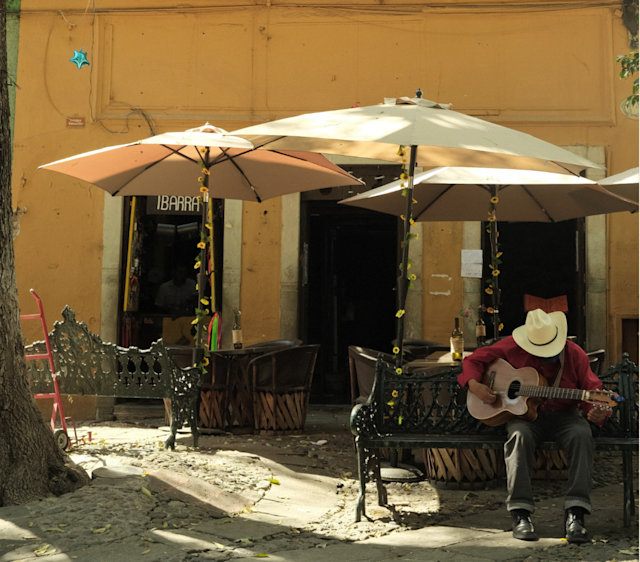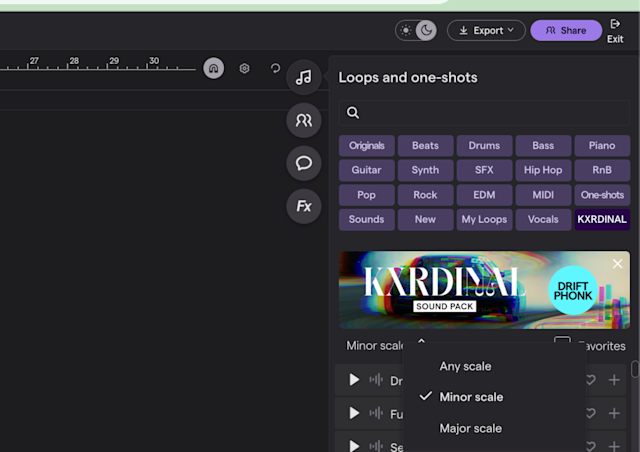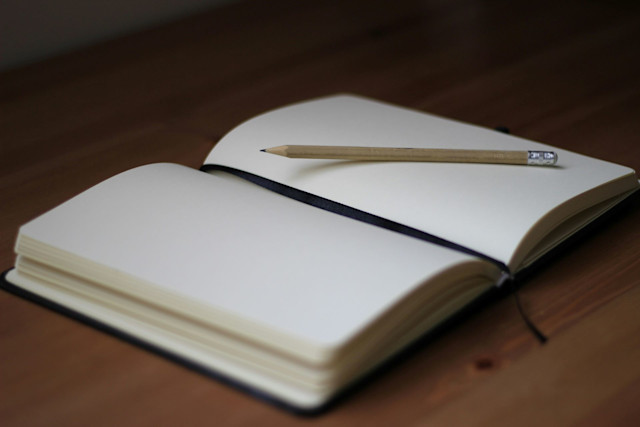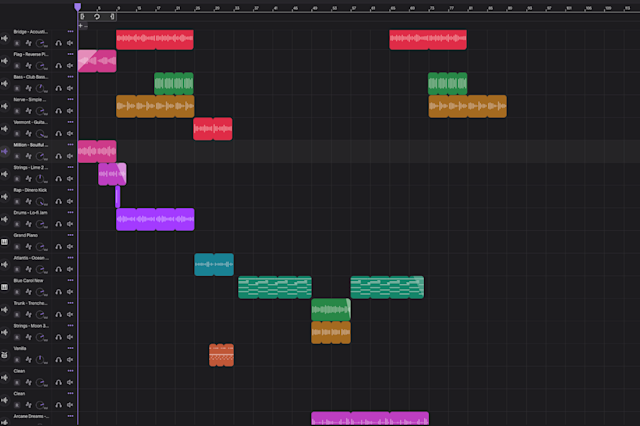Get Creative Fast: Start a New Song in 5 Steps
November 12, 2024 - Getting creative on a timeline can be a difficult task to achieve. Here are some quick tips on how to get your next song on its way.

How Do You Put A Timer on Creativity?
When we’re commissioned to create a song, we’re usually working with a deadline. So how do be get creative and write a song…fast?
I’ll give you a hint: The most important part is how you begin.
As I mentioned in my writer’s block article, one of the worst parts of being an artist is “Blank page syndrome”. Luckily, it’s not a difficult affliction to cure. After all, with songwriters like Lady Gaga and Dolly Parton having written songs in a couple of hours or less, there must be some way to pen a song quickly.
Curious?
Here’s how.
1. Preparing: On Relaxing and Making a Routine
The other day I was writing a quick note on Substack. It went something like this- Why is it that I can barely write 100 words before a shower, and my thoughts are overflowing afterward?!
I wrote the post because I thought it was comical, but I already knew the answer: Because it relaxed me. That’s all to say that, in order to write songs quickly, you need to be relaxed and have music integrated into your daily life.
Before you begin do something that relaxes you
Keep a notebook or phone recording app at the ready (you never know when inspiration will strike)
Be consistent, make a creative ritual
Choose a time and place
Stack your songwriting habit
The way you prepare for songwriting will likely look different than mine. But no matter what you do, making a ritual around creativity is a must-have. When I go to practice my flute, I grab a cup of tea and settle in first.
Like the book Atomic Habits states, stacking your daily tasks can help you write more often, and have it feel more natural. This means quicker and more reliable creativity. I know I’m going to have a cup of tea every day, so I ‘stack’ that habit with playing flute. The smell of turmeric tea now reminds me to practice. You can do the same: Choose something you already do. For example, work out at 5 pm, and do songwriting directly after. After 2 weeks, you will have fully integrated songwriting into your daily life.

Key Tip: Create Many Songs, Often
Of all of the little tips in this listicle, I believe this one to be the most important: Create often. I was once reading a book that cited a study that was done in a creative class. I believe it was ceramics. In the class, the professor asked two different groups of similarly-aged students to do two different things. One group was asked to make a single piece that was delivered at the end of the semester. The other group was asked to create as many pieces as possible. Do you know who ended up with the best piece in the end?
It was the group that was asked to produce the most items. This is because (rather than fretting out over every tiny detail) the class members were able to create and create and create. Then, they improved.
Try writing songs, fast and often. And if they’re not good?
Just make another!
2. Develop a Theme or Concept
Quality prompts help us answer questions like: What is the main message I want to convey?
Like in Annie Dang’s video, one of the first steps is to start asking yourself about the concept.
Is it a story about you?
What is it about?
A sonic expression of a mistake you made?
Are you imagining life in someone else’s shoes?
It’d be difficult to count how many albums have been composed around a central theme. Finding one solid idea is an excellent way to get a song on the road to completion. And while you don’t have to have a theme, it certainly helps creativity along in most cases.
3. Fill it Out: Firmly decide the Song Structure
Focus on the big picture: The shell of the song. Decide the key center and tempo, then, put together a sketch of the following:
A beat
A bassline
A melody
Worry about the ornamental parts and filling out the middle space later. Knowing song form can expedite the process. One song form might be like this: AABA. Same same, different, same.
Using loops like this in Soundtrap’s library makes it fast and easy. The premium beats are my personal favorite to help fast-track the production of a song. Another idea is to use a songstarter that already has these elements inside.

4. Flesh Out A Catchy Melody through Motifs
I find that writing a melody comes naturally if the shell of the song feels cohesive.
Try: Singing nonsense words
Or: Vamping over progressions
Avoid: 2 notes trills, excessive repeats
Try finding a melody by singing nonsense words, or comping over a basic progression. Remember, you can always change the meaning later. A good rule of thumb for writing is to develop a motif- That is, a short several note that you will use over and over again.
To develop a motif, here’s one thing to avoid: The (dreaded) two-note trill. While this is something you will hear in songs on the radio, it’s not good songwriting practice. Here, a motif would go between two consecutive notes like this: D, C, D, C, D, C, D. While good production can sometimes save a tune poor songwriting: Don’t do that. Anther a good rule of thumb is to never repeat a short theme or motif more than 3 times in a row. In the classical world, we call this “The Vivaldi Rule”. Luckily, it can be applied to anything. Yep, even trap!
5. Compose the Lyrics
How do you write lyrics…fast?
One of the easiest ways to tell a story that happened to you. Write down that story, and then twist it up and make it harder to understand. Turn it into a poem, or otherwise amplify the emotions. Be dramatic!
To make it a bit more upscale, try using half-rhymes instead of full rhymes if it’s coming from a poem.
Sometimes, a single word or line can serve as the cake plate for creativity: Something an entire collection of songs are built on.
After the Draft
When you’ve drafted the lyrics and shell of the song, take time to play through the song and make tweaks. Adjust the melody, chords, or structure as needed, and consider the overall emotional impact of the tune.
This is the time to start asking more specific questions like: Does the song flow smoothly from start to finish?
Now is the time to pause and edit. The first draft of the novel is done, now, send it to another discerning pair of ears and see what they think. Polishing each section will help your song feel complete and cohesive. However, if you do this too soon, you’ll stunt your creative process.
More Tips for Getting Creative
Find Anything to Break the Silence
As I mentioned the worst part is getting over the blank page syndrome. Compose a line, anything, and then keep it and build upon it. It doesn’t even have to be good. The key to writing a song quickly is getting rid of the blank canvas as soon as possible.
Collaborate: Get Creative with Another Person
Making music with a friend is a great with to get out of writer's block. Soundtrap has collaborative features that allow you to work together with another artist anywhere in the world in real-time. All you need is an internet connection.
Q&A: Does Compositional Order Matter?
No, not really! Each creative has its own order of operations that works best for them. For me, I get easily inspired by words, so I love to start with lyrics. However, I’ve also found success in beginning with a bassline, melody, or even a beat. Know that the order in which you write may affect the overall flavor of a song. A quick hack to get a song sounding ‘different from what you normally would do” is to reverse the order of the things you compose.

Artists Who Wrote Famous Songs Quickly
Still, feel like you can’t write a tune quickly? I bet you can.
Here are some famous tunes that were written in a day or less. Keep reading and we’ll also talk about how they were written.
Dolly Parton- “Jolene” and “I Will Always Love You” were written on the same night
Lady Gaga- “Just Dance” was written in ten minutes
Similarly, Ed Sheeran’s “Photograph” was another ten-minute tune
Paul McCartney’s “Yesterday” was written in less than 24 hours
Forget writing just one song in a day…Why not write two?! Dolly Parton said that when she was writing her album Jolene she kept her recording decide- a cassette- at the ready.
Lady Gaga’s “Just Dance” was written in a studio in Hollywood in a matter of minutes- and while she was hung over to boot! She told HX Magazine:
"I was taken very quickly out of my party lifestyle. I wrote it instantly - like it flew out of my body." She explained in the same interview the meaning of the song as "If you've ever been so high that it's, like, scary, the only way you can deal with it is not deal with it, so you just kind of dance through the intoxication." She further explained that "It's about being drunk or high at a club and you dance through it, like you do in all stretches of life, when obstacles come, dance through it." -Lady Gaga
Ed Sheeran found inspiration in “Photograph” with a piano loop. It was written by a collaborator, Johnny McDaid of Snow Patrol.
Earlier, we mentioned singing a melody on nonsense lyrics just to get the notes. This is a trick we pulled from Paul McCartney. “Yesterday” used to be “Scrambled Eggs”. Rumor has it that the song was inspired by a dream. “Yesterday” was done from start to finish between one evening and one morning. Singing a melody to nonsense words is a comical yet excellent way to get rolling.
From what we can glean, having a recording device at the ready, writing about personal experience, singing nonsense words, and using loops are all tried and true roads to a quick and great song.

How To Start a New Song: Conclusion
If Lady Gaga can write an electronic song in 10 minutes, so can you. Creating a new tune doesn’t have to be a long or daunting process. With a few guiding principles—finding inspiration, developing a theme, choosing a structure, building a melody, and refining your lyrics—you can quickly get a new song off the ground. Embrace experimentation, enjoy the process, and most importantly, let your creativity flow. Happy songwriting!
Oh yeah…Did you want to make the process go even faster? Check out Soundtrap, the world’s first cloud-based digital audio workstation. It includes quick tools like loops, effects, and mastering so that you can create sonic works more quickly and easily. Check it out for free here!
About the author
Aleah Fitzwater is a multi-instrumentalist, songwriter, music journalist, and blogger from Temperance, United States. Aleah holds a Pk-12 instrumental music education degree. Her main instruments are flute, piano, drums, bass, and guitar.
Get started with Soundtrap today!